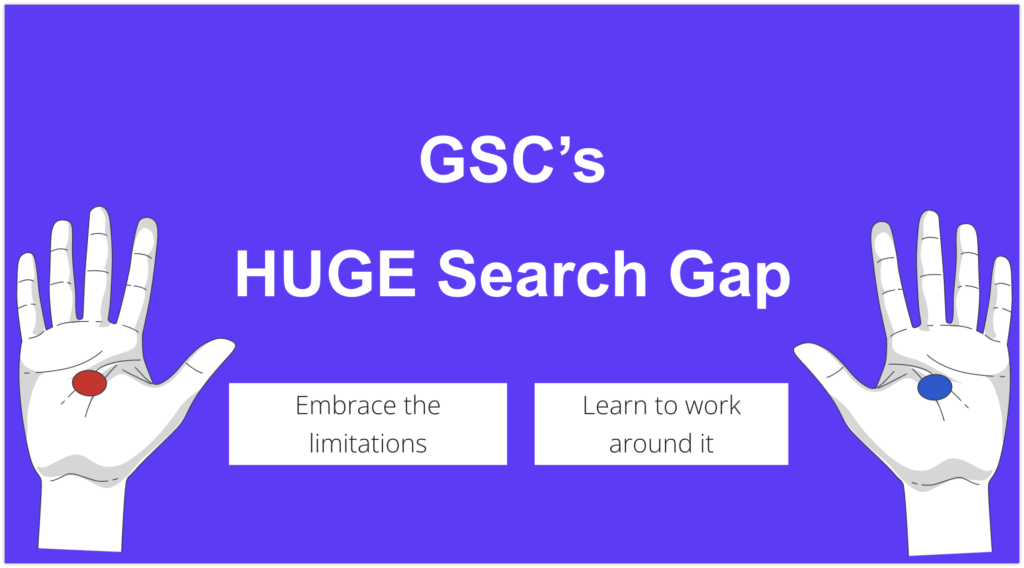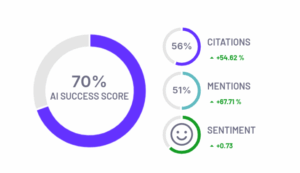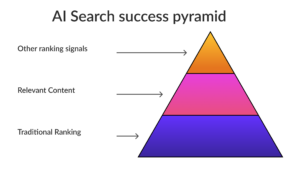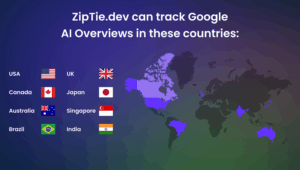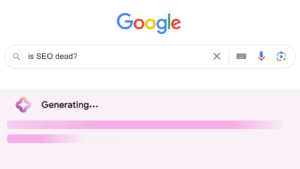Google Search Console has long been the go-to tool for website owners who want to understand how people find their content in Google.
But there’s a growing problem that’s affecting nearly every website owner: Google Search Console is missing a massive chunk of the modern search landscape, for instance it can’t properly track conversation-style queries.
Missing data in Google Search Console
For some of you this is a known fact, but for many of you it might be a big surprise: approximately 50% of search queries appear as “anonymous queries” in Search Console.
This means that for half of all visitors coming from approximately 50% of search queries appear as “anonymous queries” in Search Console. Google, there’s no data about what they actually searched for.
The queries that drove this traffic simply don’t show up in the reports.
This has profound implications for the conversational search boom.
My own experiment
Knowing that search has become more conversation-style, I wanted to check if Google is ready.
So I started asking Google the same question related to my website for a few days in a row, using different devices and different Google accounts.
The results confirmed my suspicions: Google Search Console didn’t report any of the traffic for the specific query I used.
To verify that this wasn’t just an issue with ZipTie.dev, I asked 10 other SEOs to check their Search Console for similar queries. They also saw nothing in GSC.
Google search console didn’t report these queries.
Zero. Nada. Null.
Google Search Console didn’t show these queries were searched by users.
This was a clear signal Google is not ready to help you with monitoring conversation queries.
Keywords with rising popularity – partial data
It seems Search Console only begins tracking a query once it reaches a certain popularity threshold. If a search term doesn’t get enough volume, it simply won’t appear in your reports.
Even worse, according to experiments done by my colleague, Jakub Łanda, when a query finally becomes popular enough to track, Google only shows data from that point forward—all the historical data from before it reached the threshold disappears.
This creates a blind spot that makes it nearly impossible to identify emerging trends or understand the full scope of how people find your content.
It seems less popular queries may not be reported at all.
While queries that become popular over time may be reported with significant inaccuracies.
Replicate my experiments
You don’t have to take my experiment for granted. It’s very easy to replicate this experiment.
Experiment 1:
- Choose one question and ensure that this question is not already reported in Google Search Console.
- Use Google to ask this question over a few days in a row.
- Then check if Google Search Console reports it. To do so go to the Performance section and apply the Query filter.
Experiment 2:
- To see the threshold when Google starts reporting this query, ask your colleagues and friends to query this in Google
- Then check if Google Search Console reports it.
- In the next few days ask other friends to query Google and repeat this experiment until GSC reports it.
- Note when Google started reporting and which portions of information are underreported.
Why Search Console Struggles with Modern Queries
The problem lies in how conversational searches work.
When someone wants to learn about the latest iPhone, they might search using dozens of different phrasings:
- “What are the pros and cons of the iPhone 16?”
- “Compare iPhone 16 with Samsung S25”
- “Which phone is better, iPhone 16 or Galaxy S25?”
- “Should I buy the new iPhone or stick with Samsung?”
Each individual query might only get 10-15 searches per month, but collectively, these variations could represent hundreds of searches around the same core topic.
Google Search Console often fails to report these low-volume, long-tail variations, even though their combined impact is significant.
This will become worse and worse
It’s clear the way people search has transformed dramatically over the past few years. Instead of typing short, keyword-focused phrases like “iPhone review,” users now ask complete questions like “What are the pros and cons of the iPhone 16 compared to the Samsung Galaxy S25?”
Several factors are driving this shift:
Voice Search Adoption: Around 20% of the global population uses voice search regularly, with half of Americans using it daily. When people speak, they naturally use full sentences and conversational language.
Natural Evolution: Even back in 2010, 55% of text-based searches were already longer than three words. The trend toward conversational search was happening long before AI became mainstream.
AI Tool Influence: Tools like ChatGPT and Perplexity have trained users to ask detailed, conversational questions. More and more people will apply this same approach when searching on Google.
Google’s Contradictory Behavior
Here’s what makes this situation particularly frustrating: Google clearly understands and responds to conversational queries.
Recently, I took a sample of 140k questions from People also Asked collected by Mark Williams Cook, co-owner of AlsoAsked.com.
AI summaries appeared on 80% of them.
So it seems Google is ready to show the AI answer on conversational queries.
Yet, it struggles to report conversational queries in one of the most important tools in SEO’s and marketer’s toolkits
The Strategic Impact
This data gap creates real problems for website owners and SEO professionals:
Incomplete User Understanding: Without knowing the specific questions people ask, it’s difficult to create content that truly addresses user needs or to understand the language they use.
Missed Optimization Opportunities: You might not optimize for valuable conversational queries because they don’t appear in your reports, even though users are actively searching for that information.
Skewed Performance Analysis: Relying solely on Search Console data can lead to incorrect conclusions about which content performs well and why.
Trend Blindness: It’s nearly impossible to spot emerging topics or shifts in user interest until they reach mainstream volume.
For example, you might never know that people are searching for “list of best SEO agencies in my area” because each specific variation gets low volume, even though the collective demand is substantial.
Working with Incomplete Data
Given these limitations, website owners, SEOs and marketers need to adjust their approach.
The key is accepting that Search Console provides an incomplete picture and operating under the assumption that users are searching conversationally – just like they do with AI chatbots and voice assistants.
This means:
- Not relying solely on Search Console data for strategic decisions
- Using additional tools and methods to brainstorm potential conversational queries (i.e. asking chatbots)
- Focusing on topics and user intent rather than just specific keyword phrases
- Creating content that answers complete questions, not just targets keywords
- Using Google Search Console reporting by Page not Query – to see which topics bring you the most traffic. To do so in Google Search Console click on Performance -> and navigate to the Pages tab.
Looking Forward
Hopefully Google will eventually address these reporting gaps.
If a Googler reads this article, these reports will be particularly useful:
- AI mode & AI Overviews traffic / query breakdown.
- Emerging questions
- Emerging topics.
Until then, website owners need to acknowledge the limitations of current tools and adapt their strategies accordingly. The search landscape has evolved, but the reporting tools haven’t kept pace. Understanding this disconnect is the first step toward making better decisions despite incomplete data.
The bottom line: if you’re seeing a lot of “anonymous queries” in your Search Console and wondering where half your traffic is really coming from, you’re not alone.
The data gaps are real, significant, and affecting nearly everyone. The sooner we recognize and work around these limitations, the better we can serve our users in an increasingly conversational search world.
